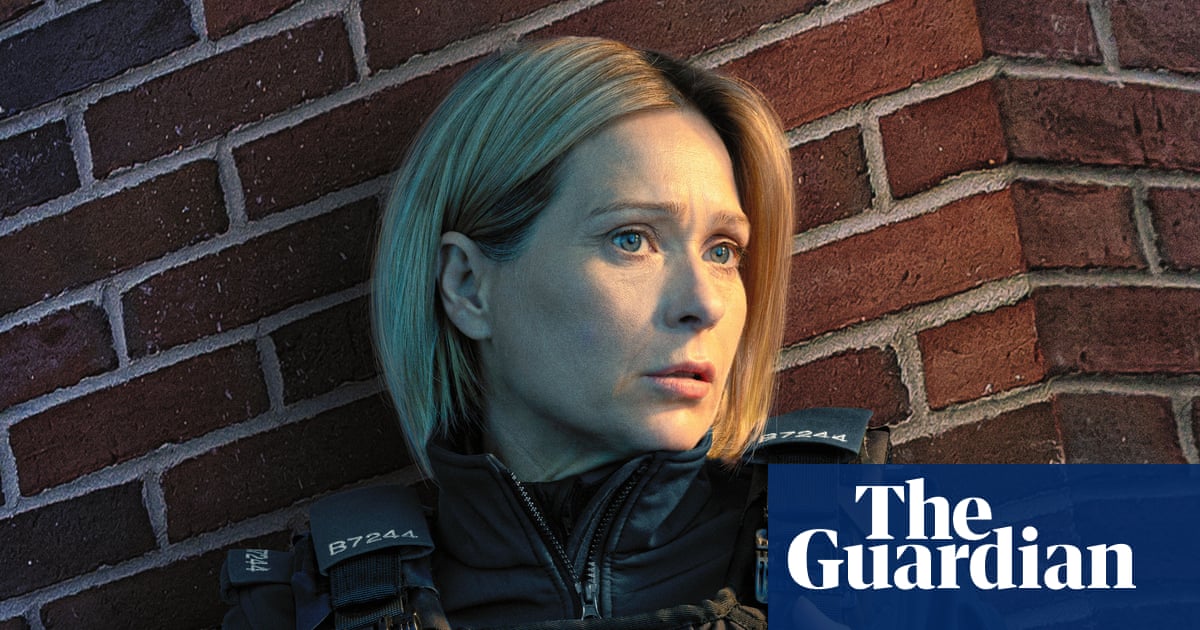In August 2023, delivery driver Aurman Singh was viciously attacked and killed by a group of eight men in Shrewsbury, suffering a traumatic head injury that led to his death. He had been struck with weapons including a golf club and an axe, before his mask-wearing assailants fled in two cars. One eyewitness – whose doorbell camera footage is analysed by police – says Singh’s eyes were “fixed open … it was like someone just pressed stop”.
Singh’s killing – dubbed “The DPD Murder” by the programme-makers – was unusually callous and brutal, making for what lead investigator DCI Mark Bellamy describes as a “beast of a job”. It also makes for compelling television, although you may well wonder whether you should be watching it all, in such harsh detail. As its title suggests, Murder 24/7 is wall-to-wall, hour-by-hour death, its six episodes a sobering experience, during which – in spite of the care it affords its cases – you can’t help but feel voyeuristic.
The first series – broadcast in 2020 – followed Essex police. This time we’re embedded with West Mercia law enforcement, as they investigate cases including Singh’s murder, which unfolds over two and a half episodes of this six-part series. By the end of the first, there are four men in custody, but only one – Arshdeep Singh (no relation to the deceased) – gives an account of the events leading up to Aurman’s death. There is, of course, footage of their respective police questionings. But, the real selling point is that we also see DS Alex Sullivan – an interview specialist – watching remotely, working out what and when to tell the suspects. In this case, that means figuring out when to tell Arshdeep that they’ve got him bang to rights, as they have a video of him disposing of one of the murder weapons in a wheelie bin.
The work that Bellamy and his 45-strong team do is long, painful, and clearly takes a toll (his face in particular is fixed in a permanent frown, and I am happy to learn online that he has since retired from the force). But it is also necessary; in episode two (which airs tomorrow, followed by episode three on Wednesday), a discovery by a member of the public, coupled with that relentless policing, leads to a big breakthrough in the Aurman Singh case. Still, it’s wearying work: looking into Arshdeep’s phone records alone leads to 141,000 pages of calls and messages (a decision is quickly made to just home in on messages from the days leading up to the attack). On the phone of another suspect, more critical evidence is found (or as one officer puts it: “Jagdeep’s in a bit of bother there, in’t he?”)
However, while investigating murders is clearly an onerous job, I’m not sure we ever move past the surface of the investigations. Despite dedicating two-and-a-half hours to the Aurman Singh case, we don’t ever get a sense of his killers’ motivations; nor do we get a portrait of Aurman, the 23-year-old at the centre of it all. It’s easy to call crime documentaries voyeuristic, but when you have such a strong sense of how somebody was killed – complete with 3D reconstructions of where the various murder weapons struck their skull – but no idea who they were, it’s difficult to ignore. It’s a criticism you can level at other cases in the series, too, such as that of an elderly man, Ivan, suspected of trying to kill himself and his son after his wife’s death. We see the emotional price paid by Ivan, and by DC Tracy Ruff, who treats his case with rigour but also compassion. But we don’t get a picture of the other two people involved: Ivan’s wife, Maureen, or his son, Gavin. Keeping them off-camera makes sense: Maureen is dead, and Gavin is severely disabled and – we later learn – now in the care of social services. But, with that in mind, is this a story we need to bear witness to at all? Meanwhile, watching The Killer Son – about a man who killed his mother during a psychotic episode – may feel to many like gawking at a totally abject situation.
The episodes that focus on a domestic abuser, Damian Homer, feel more complete. There, we hear from his former partner, Stacey Hill, and the focus shifts to the insidious nature of intimate partner violence – which ran concurrent to Stacey and Damian’s happy faces on social media, and which led to the death of Stacey’s mother, Wendy. But, too often, Murder 24/7 attempts to go deep only to end up somewhere shallow. We certainly see how well West Mercia police do their jobs. But, without more of the why, cases such as The Killer Son – or indeed The DPD Murder – feel like true-crime cliche.

 3 months ago
84
3 months ago
84

















































